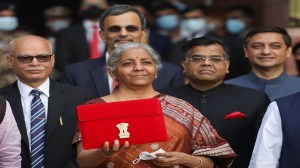As India approaches its 2025 Union Budget, there’s rising expectation that the federal government will prioritize key sectors that align with the country’s imaginative and prescient of monetary enlargement, nationwide safety, and technological innovation. Industry leaders from numerous sectors have shared their insights on what the approaching price range must focal point on, with specific emphasis on defence modernization, self-reliance in defence, and boosting India’s management within the world tech ecosystem.
Military Modernization and Defence Self-Reliance: A Strategic Focus
Capt. Nikunj Parashar, Founder of Sagar Defence Engineering Pvt. Ltd., stresses the desire for larger funding in India’s defence sector. Reflecting at the govt’s dedication to financial enlargement and reforms, he remarks, “As the Union Finance Minister Nirmala Sitharaman has highlighted, 2025 will be a pivotal year for significant policy measures aimed at driving India’s economic growth. We anticipate a key focus on enhancing military modernization and boosting Aatmanirbharta (self-reliance) in defence, a critical area for national security.”
As India continues to beef up its defence features, Capt. Parashar envisions that the 2025 price range will play a an important function in supporting technological developments and fostering a strong defence production ecosystem. “There is anticipation for increased allocations for innovation and research to support advanced technologies. We look forward to the 2025 Budget aligning with the nation’s goals of strengthening its defence capabilities while fostering economic growth and innovation,” he provides.
Reforming India’s Tech and Defence Landscape:
Dr. Subba Rao Pavuluri, Chairman & Managing Director of Ananth Technologies, requires a complete focal point on era and defence. Highlighting India’s adventure against turning into a “Vishwaguru” (world chief), he states, “The budget should enable VIGYAN Bharat (Technology) to contribute and SURAKHIT Bharat (defence), as these two areas should receive enough funding for Bharat to become a VIKASIT Bharat.”
Dr. Pavuluri additionally advocates for transparent coverage frameworks round Make in India and Antyodaya, stressing the significance of last-mile connectivity via satellites. He additional means that investment and govt encouragement for satellite-based answers must be prioritized to uplift underprivileged sections of society, particularly in far off spaces.
Strengthening India’s Drone Infrastructure and Indigenous Capabilities
With the fast enlargement of the drone sector, specifically in safety and defence packages, Kiran Raju, CEO & Co-Founder of Indrajaal, sees nice doable for the federal government to spend money on drone infrastructure as a part of its 2025 Budget. Raju notes, “As India looks ahead to Budget 2025, the focus should be on modernizing the armed forces and strengthening drone infrastructure. The government needs to prioritize strengthening home-grown drone infrastructure to foster innovation and self-reliance.”
Raju believes that whilst many states have already began making an investment in drones, there’s a urgent want for infrastructure to give a boost to the rising quantity of drones within the nation. A better emphasis on Indigenous manufacturing, coupled with an larger focal point on safety, would play a pivotal function in India’s defence features.
India’s Role within the Global Drone Ecosystem: Cybersecurity and Component Manufacturing
Sai Pattabiram, Founder & MD of Zuppa Geo Navigations Pvt. Ltd., brings consideration to the worldwide alternative for India to turn into a dominant participant within the drone business. He asserts that “The demand for secure, non-Chinese drones is growing worldwide, and India has the opportunity to leverage its domestic consumption and global reputation as a technology partner.”
Pattabiram stresses the significance of India transferring past the meeting of imported parts to a deeper involvement within the drone part provide chain. “Drone cybersecurity is crucial, especially in light of recent global electronic warfare threats. The government should support companies involved in component manufacturing, cybersecurity, data security, and analysis for drones,” he provides. According to Pattabiram, a Design Linked Incentive (DLI) scheme, coupled with a Production Linked Incentive (PLI), would additional spice up the field and advertise home part production.
Fostering India’s Leadership in Web3 and Crypto
Nikhil Sethi, Founder & MD of Zuvomo, highlights the desire for India to reclaim its place as a pace-setter within the world tech ecosystem, specifically within the Web3 and cryptocurrency areas. In his pre-budget commentary, Sethi notes, “The Budget 2025 is a critical moment for India to reclaim its leadership in the global tech ecosystem. India ranks #1 in the number of crypto holders and #3 in tech unicorns globally, yet we have missed the Web3 revolution.”
Sethi emphasizes that unclear crypto laws and a regressive tax regime have hindered innovation, pushing startups and ability out of the country. “The government must provide clear compliance frameworks and a progressive approach to crypto regulation. A balanced taxation system and a supportive environment will ensure India remains at the forefront of global innovation,” he urges.
Shaping India’s Future via Strategic Investments
As the 2025 Union Budget approaches, business leaders are hopeful that the federal government will take daring steps to fortify India’s defence sector, advertise technological innovation, and place the rustic as an international chief in rising industries. The focal point on army modernization, indigenous production, drone infrastructure, and Web3 innovation might be key in propelling India against turning into a Vishwaguru.







